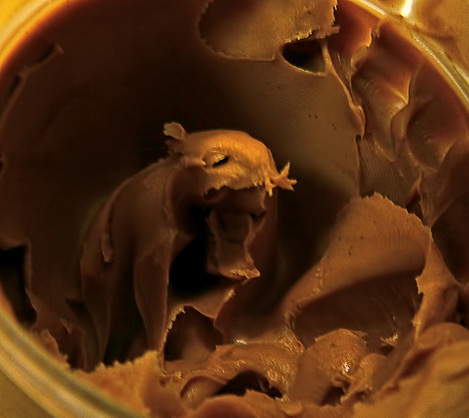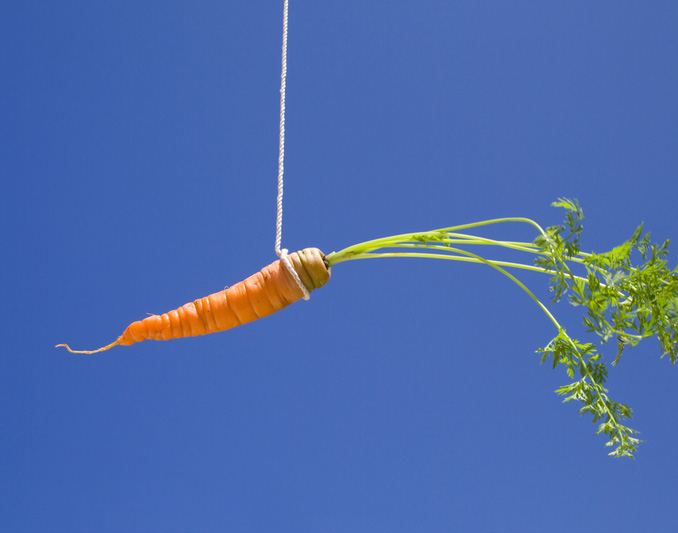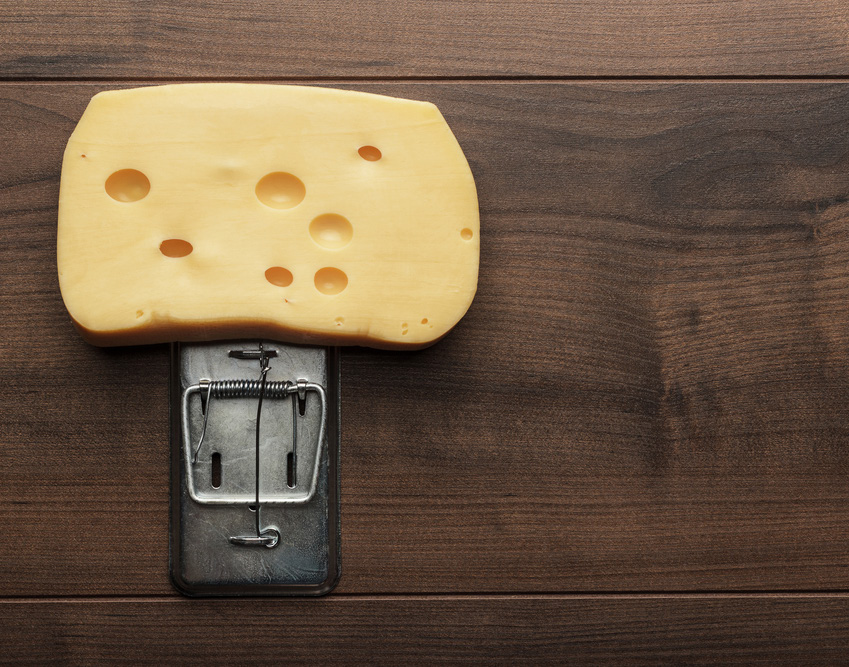Using Bait
It’s important to understand how to effectively use bait to become a successful trapper. Some traps do not require bait while others rely on bait almost exclusively to lure animals within range (deadfalls and box traps are good examples of traps that require bait to be effective). You should also be familiar with the types of animals you are targeting.
Some animals do not respond to bait at all, some will respond favorably only to certain types of bait, and some animals will be attracted to practically anything you place in the trap. As an example, a fresh popular branch is excellent bait while trapping beaver, but it is useless as bait when trapping any other type of game. By taking the time to understand your prey, you greatly improve your chances of success.
That said, there are some bait choices that work well for a variety of small game. Two of these are peanut butter and salt. Both of these items can be stored for long periods of time and are most likely part of your survival rations anyway. The most effective way to use these baits is to spread small portions around the trap line. This allows the animals to acquire a taste for the bait meaning they will be less wary of wandering into your trap to get some more.
There are a lot of other foods that work well as bait, but what works and what doesn’t may differ from region to region. For instance, while peanut butter may work in 90% of the areas where you trap, there may be areas where animals simply are not interested in this bait. It helps to study the diet of local animals as animals are much more likely to eat your bait if it happens to be something their natural diet lacks.
Trial and error is the rule of the game when it comes to finding the correct bait for a given area and species. When setting bait, make sure to set it up in a way that ensures the trap will be triggered. Improperly set bait affords the animal with a free meal and is a missed meal for you.
If using a deadfall, for instance, make sure the bait is placed far enough under the weighted object so the animal doesn’t have a chance to escape when the trap is activated. For animals that don’t respond well to bait, lures can sometimes to an effective way to attract prey. Naturally occurring scents, such as the urine of another animal, can sometimes be effective.
These lures, known as curiosity lures, work by playing on the natural curiosity of some animals.
Foxes and coyotes are known to be attracted to lures. Choosing the proper bait for a given area is about trial and error and a little bit of common sense.

If you are in an area with a high concentration of carnivorous animals, it wouldn’t make sense to use plant or vegetable baits. Birds, fish, cheese, and even rotten eggs would all be better choices in this scenario.
One final note about bait that successful trappers need to understand is that some animals have become “trap shy.” This refers to animals who are especially wary of traps because they have almost been trapped before or they have witnessed another animal get trapped.

It may be impossible to capture trap shy animals. If you see plenty of evidence of animal activity in the area but aren’t catching anything, you may have trap shy animals in the area. If this occurs, try scattering bait throughout the area (not just in the traps) to lure the animals closer. You can also try moving the bait to another area within the trap which forces the animal to approach from a different angle.
Even trap shy animals aren’t that smart and sometimes a little change like this is all it takes to capture even trap shy animals.


